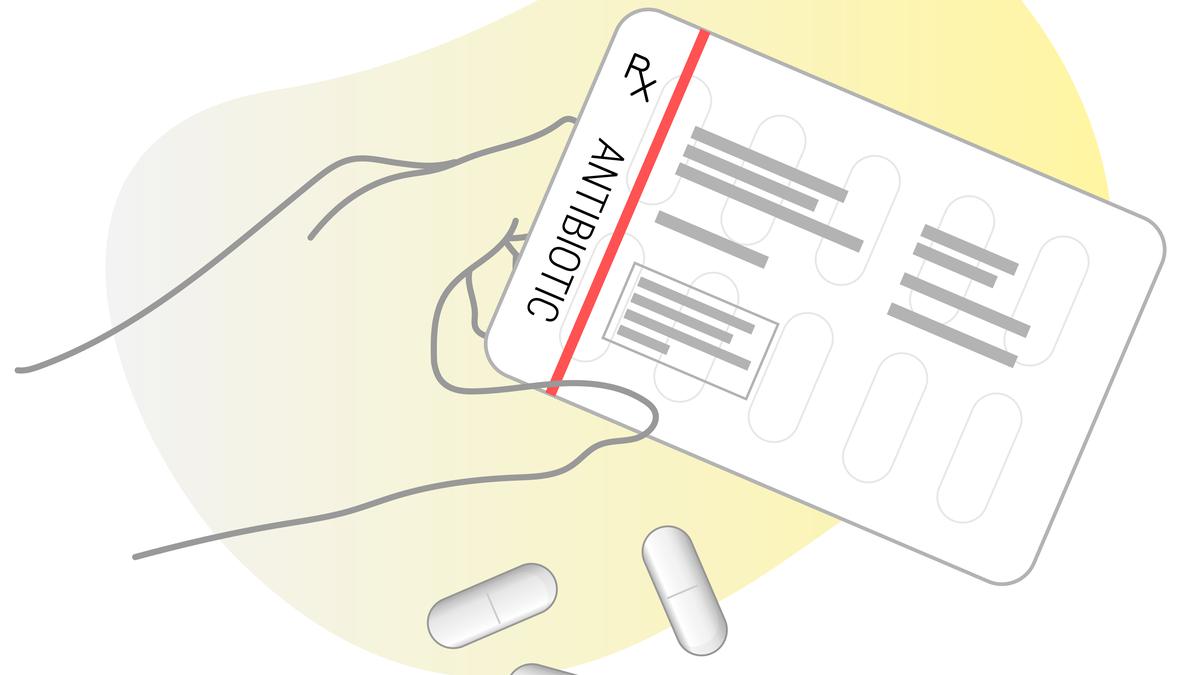While the world is recovering from the acute phase of the COVID-19 pandemic, the extremely dangerous but imperceptible pandemic of Antimicrobial Resistance (AMR) is unfortunately here to stay. Most countries recognised COVID-19 as a clear and present danger in 2020, forcing governments, including India’s, to respond quickly and accurately. Rapidly rising AMR rates necessitate a multi-sectoral, global and national response.

What exactly is antimicrobial resistance?
- Antimicrobial resistance (AMR) is a natural phenomenon that occurs when microorganisms such as bacteria, viruses, fungi, and parasites evolve to become resistant to antimicrobial drugs that were previously effective in treating infections caused by those microorganisms.
The Threat of Antimicrobial Resistance
- Human deaths: In 2019, AMR caused approximately 4.95 million human deaths worldwide, highlighting the urgency of addressing this issue.
- Report by OECD: According to a 2018 report by the Organization for Economic Cooperation and Development, the world could see a significant increase in resistance to second and third-line antibiotics by 2030.
- Every year, resistance rises by 5% to 10%: According to a 2022 study conducted by the Indian Council of Medical Research (ICMR), resistance to broad-spectrum antimicrobials increases by 5% to 10% each year.
- Resistance is common in commonly used drugs: The Indian Network for Surveillance of Antimicrobial Resistance (INSAR) discovered a high rate of resistance to commonly used drugs like ciprofloxacin, gentamicin, co-trimoxazole, erythromycin, and clindamycin, emphasising the importance of combating AMR.
- High levels of resistance: The World Health Organization has expressed growing concern about the dangerously high levels of antibiotic resistance among patients worldwide.
- Ciprofloxacin, for example, is an antibiotic commonly used to treat urinary tract infections. According to the WHO, resistance to ciprofloxacin ranged from 8.4% to 92.9% in E. coli and from 4.1% to 79.4% in Klebsiella pneumoniae (a bacteria that can cause life-threatening infections such as pneumonia and intensive care unit- related infections). Patients with multidrug resistance have less than a 60% chance of recovery in the global TB epidemic.
- Increases the burden of communicable diseases: AMR increases the burden of communicable diseases and strains a country’s health systems, making it even more difficult to address health crises.
What is Muscat conference is about?
Ministerial Conference on AMR: The Muscat Ministerial Manifesto on Antimicrobial Resistance was adopted by over 30 countries at the Third Global High-Level Ministerial Conference on Antimicrobial Resistance (November 24-25, 2022).
The conference focused on three health targets:
- By 2030, reduce the total amount of antimicrobials used in the agri-food system by at least 30-50%.
- Antimicrobials that are medically important for human health should not be used in animals or food production.
- Ensure that by 2030, the WHO Access group of antibiotics account for at least 60% of total antibiotic consumption in humans.
Muscat Manifesto:
- The manifesto acknowledged the need to accelerate political commitments in the implementation of One Health action for controlling the spread of AMR.
- It also recognised the need to address the impact of AMR not only on humans but also on animals, as well as in areas of environmental health, food security, and economic growth and development.
So far, the government’s efforts
- Antimicrobial Resistance National Action Plan (2017-21): The National Action Plan on AMR emphasised the effectiveness of government initiatives such as Swachh Bharat Abhiyan, Kayakalp, and Swachh Swasth Sarvatra for hand hygiene and sanitation.
- Increasing public awareness: The government has also attempted to raise public awareness about healthier and more sustainable food production practises, particularly in the animal food industry.
- Specific guidelines for using and limiting antibiotics: The National Health Policy 2017 also included specific guidelines for using antibiotics, such as limiting the use of antibiotics as over-the-counter medications and prohibiting or restricting the use of antibiotics for livestock growth promotion.
- It also called for a review of antibiotic prescriptions in order to assess antibiotic usage in hospitals and among doctors.
Global Examples of AMR Limitation
- Antimicrobial resistance is less likely when less antimicrobials are used: Scientific evidence suggests that the use of fewer antimicrobials reduces the likelihood of drug resistance emergence.
- Netherlands and Thailand: The Netherlands and Thailand have reduced their usage by nearly 50%.
- China: Antibiotic consumption in China’s agricultural sector has decreased significantly.
In the future: India’s Position
- India has pledged to improve surveillance and promote research into newer drugs.
- GLASS: It also intends to increase private sector participation and data reporting to the WHO Global Antimicrobial Resistance and Use Surveillance System (GLASS) and other standardised systems.
@the end
The various G-20 health summits occurring between now and 2023 provide an opportunity for India to ensure that all aspects of AMR are addressed and countries commit to progress. India’s role in ensuring that AMR remains high on the global public health agenda is critical as the current G-20 president and as a country vulnerable to this silent pandemic.
Source: https://www.thehindu.com/opinion/lead/a-manifesto-for-tackling-the-silent-pandemic-of-amr/article66513455.ece
